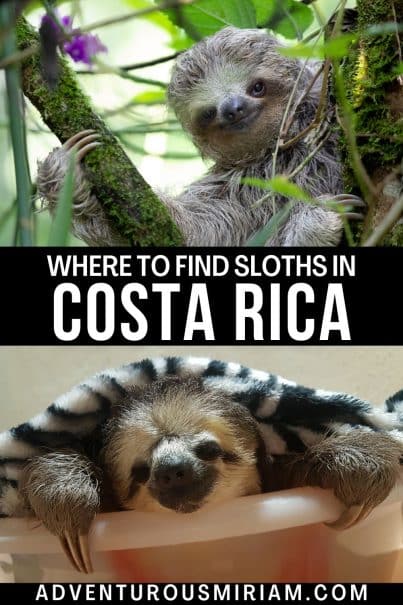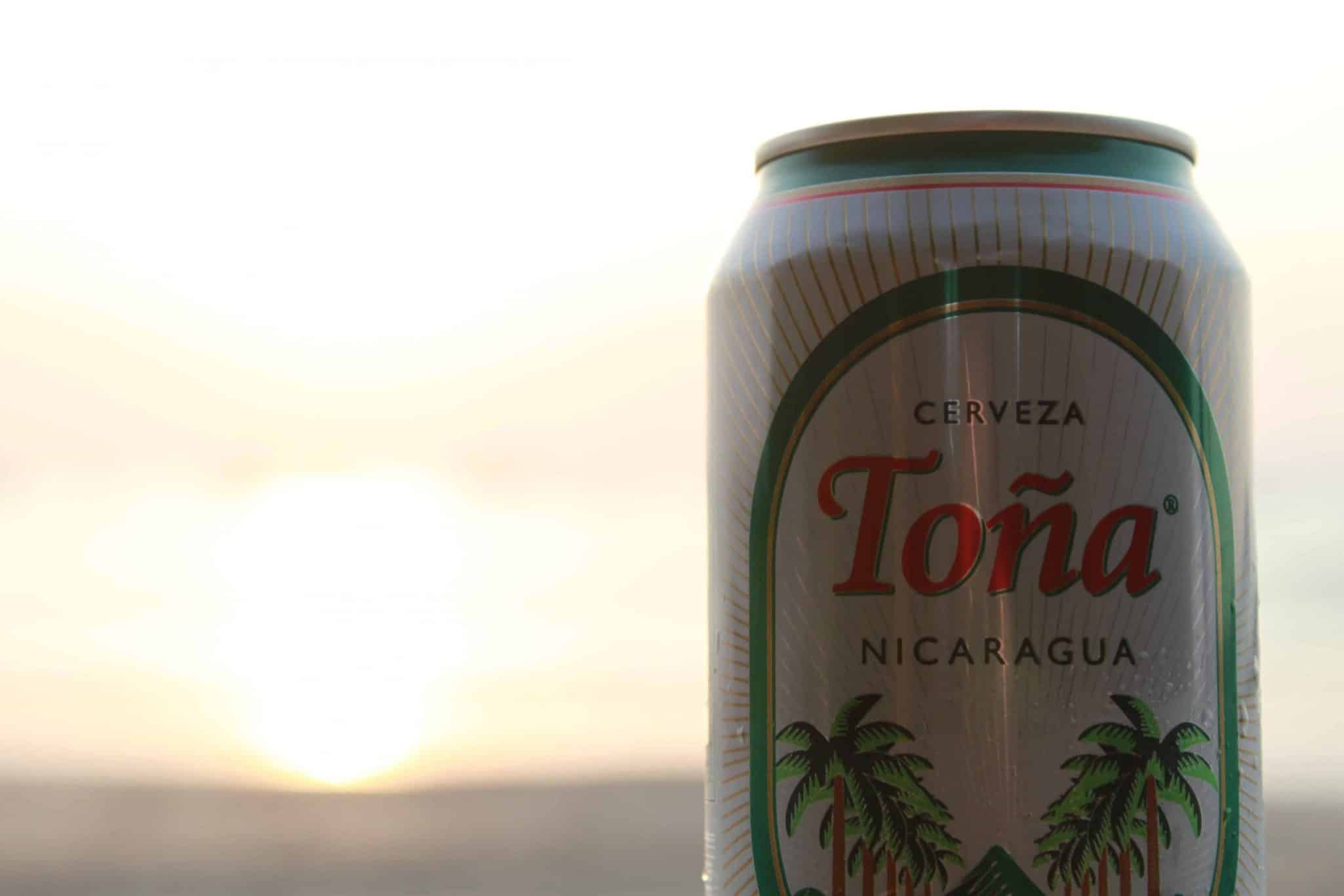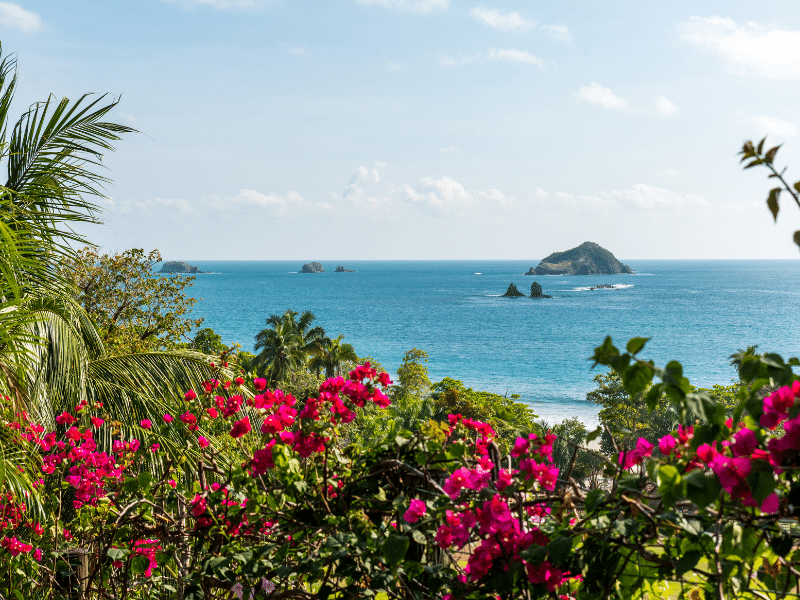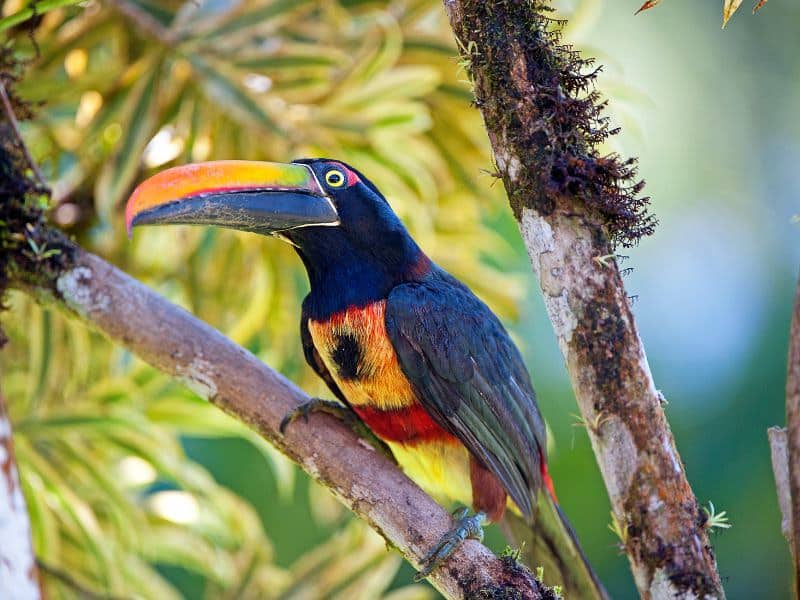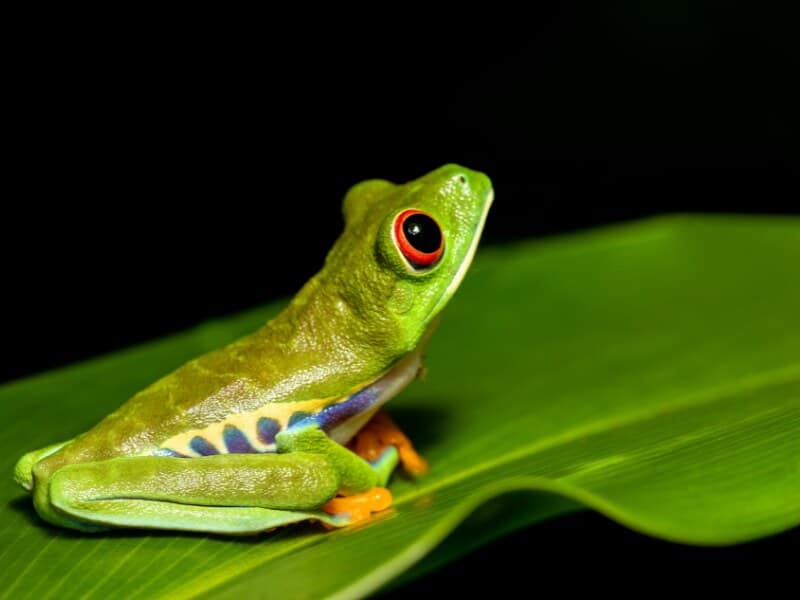Sloths in Costa Rica and where to find them
Are you wondering where to find sloths in Costa Rica?
These little cuties are some of the most common animals in the country so there’s a good chance you’ll see them if you’re heading to the national parks.
You can either hire a guide to help you find them, or you might be lucky to spot one outside your hotel window, just like I did in Monteverde.
Here’s a complete guide to everything you should know about sloths in Costa Rica and where to find them.
Let’s dive in!
This post contains referral links for products I love. Adventurous Miriam earns a small commission at no extra cost to you if you purchase through my links. I appreciate your support ♡ Learn more
About sloths in Costa Rica
In Costa Rica, you can find two out of the six sloth species in the world.
Sloths are nocturnal animals and spend about 20 hours a day asleep high up in the lush rainforests. You might catch them napping with a smile.
While Costa Rican sloths aren’t endangered, some sloth species, like the Brazilian and Panamanian Pygmy sloths, face threats.
Sloth and wildlife sanctuaries in Costa Rica work hard to protect and rescue these incredible creatures, ensuring their well-being and the preservation of their species.
Which sloth species live in Costa Rica?
Costa Rica is home to two different species of sloths.
These are the Hoffmann’s two-fingered sloth and the Brown-throated three-fingered sloth.
Despite how they’re named, all sloths have three toes—the names really refer to their fingers.
| 🦥 Two-Toed Sloth | 🦥 Three-Toed Sloth | |
|---|---|---|
| Color: | Typically darker fur, ranging from brown to gray | Light grey to brown with a characteristic facial mask |
| Size: | Slightly larger and heftier than its three-toed cousin | About the size of a small dog |
| Behavior: | Nocturnal, a bit more secretive | Super chill, spends most of the day hanging in trees |
Two-toed sloth
The Hoffmann’s two-fingered sloth is recognized by its nocturnal habits. This means you’re more likely to spot it active during the night.
It’s the less common of the two species and can be found mostly in high-altitude areas like Monteverde, resting in trees during the day.

Three-toed sloths
The Brown-throated sloth (Bradypus Variegatus) is the one you might catch hanging around during the daytime.
These sloths are smaller and slightly more active than their two-fingered relatives, and they’re also the most frequent three-fingered sloths in the world.
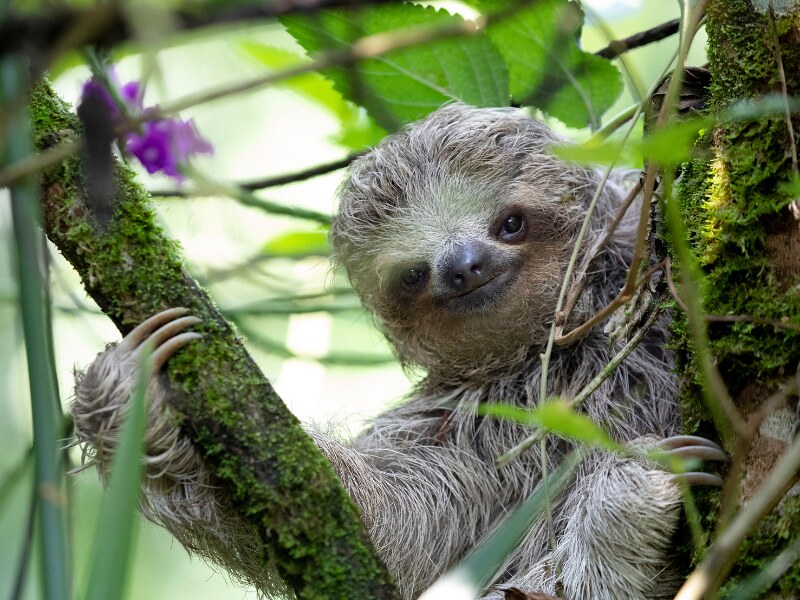
Best time to spot sloths in Costa Rica
If you’re looking to catch a glimpse of sloths in their natural habitat, timing is everything. Knowing when and where to look can increase your chances of seeing these cuties.
Best season
The best time of year to see sloths in Costa Rica is during the dry season, which runs from December to April.
During these months, you’ll have better visibility as the trees are less dense, and the sloths tend to be more active.
Read next: The best and worst time to visit Costa Rica
Best time of day to spot sloths
For the highest chance of sloth sightings, aim for early morning, late afternoon, or the night.
These are the periods when sloths are typically most active.
By early morning, they are often looking for food, and in the late afternoon, they start to settle down for the night, which can sometimes bring them closer to eye level.
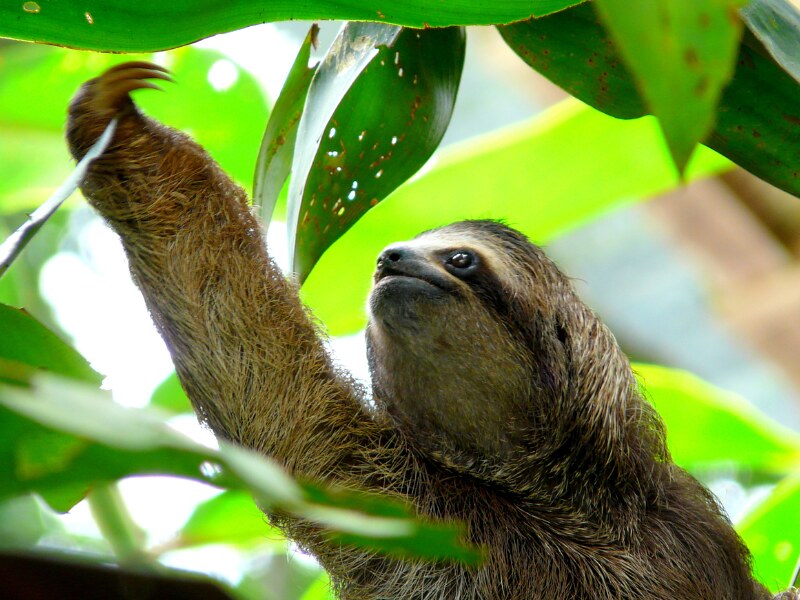
Where to see sloths in Costa Rica
Below, I’ve listed the best places to find sloths in Costa Rica, so you’ll know where to go.
Manuel Antonio National Park
Manuel Antonio National Park is home to two types of sloths: the two-toed and three-toed.
The sloths are mostly active at night, but you can still spot them during the day. The park has a healthy sloth population, so your chances of sightings are quite high.
🦥 Book a guided tour – Manuel Antonio National Park Wildlife Tour
Tortuguero National Park
In Tortuguero National Park, you’ll find mainly three-toed sloths. They’re less active during the day, often sleeping in the trees.
This park is known for its biodiversity, so while sloth sightings are less frequent than in Manuel Antonio, they do happen, especially if you’re patient.
Monteverde Cloud Forest Reserve
Monteverde Cloud Forest Reserve is a hotspot for two-toed sloths. These sloths are nocturnal, but you can still spot them resting in the trees during the day.
The dense cloud forest environment makes sightings a bit challenging, but with a keen eye and a guide, you have a good chance of seeing them.
🦥 Book a tour – Monteverde Rain Forest Night Walk
Corcovado National Park
Corcovado National Park in Costa Rica is known for its diverse wildlife, including both two-toed and three-toed sloths.
The sloths are typically active at night but can be seen during the day lounging in the trees. The park’s vast wilderness means sightings require a bit of luck and patience, but they’re definitely possible.
Sloth Sanctuary of Costa Rica (near Cahuita)
The Sloth Sanctuary of Costa Rica is dedicated to the rescue and rehabilitation of sloths.
Here, you can see both two-toed and three-toed sloths up close, while learning about their care and conservation.
Toucan Rescue Ranch (near San Jose)
Toucan Rescue Ranch near San Jose, Costa Rica, is a great spot to see rescued sloths up close. They have both two-toed and three-toed varieties. It’s more of a rescue center than a wild setting.
You’ll learn a lot about how they help these animals and what goes into their care.
Jaguar Rescue Center (in Puerto Viejo)
The Jaguar Rescue Center in Puerto Viejo, Costa Rica, is great for seeing sloths, especially if you’re into animal rescue.
They have both two-toed and three-toed sloths, rescued and rehabilitated. You get to understand their rescue stories and the efforts to care for them.

Are sloths endangered?
No, but according to SloCo, the situation with sloths in Costa Rica is worrying.
There’s no exact count of how many there are, mainly because they’re so good at hiding, but rescue centers are seeing more sloths come in than ever.
Sloths don’t have babies very often, just once every three years and a lot of the baby sloths don’t make it. This slow birth rate means they can’t keep up with how fast they’re losing numbers.
A big part of the problem is the lack of good forest space in Costa Rica. There’s just not enough of the right kind of rainforest they need.

How to encounter sloths ethically
When you’re looking to catch a glimpse of sloths, it’s important to respect the animals and their habitat. Your experience should never come at the cost of an animal’s well-being.
Dos and don’ts
Do:
- Maintain a safe distance. Keep enough space between you and the sloths to avoid disturbing them.
- Follow local guidelines. Respect the rules set by wildlife reserves or national parks.
- Use a guide. They know how to spot wildlife without causing harm.
Don’t:
- Feed the sloths. Human food can harm their health and alter natural behaviors.
- Make loud noises. Keep it down to avoid scaring the animals.
- Attempt to touch or handle sloths. Direct contact can stress the animals and even transmit diseases.

Fun facts about sloths in Costa Rica
Here, you’ll find interesting facts about Costa Rica’s sloths:
1. There are two types of sloths in Costa Rica
In Costa Rica, you’ll find both two-toed and three-toed sloths. They’re pretty different in looks and habits. The two-toed sloths are a bit bigger and like to be active at night.
2. They move in slow motion
Sloths are famous for being slow animals. They take it easy to save energy because they don’t eat high-energy foods.
3. Sloths are great swimmers
You might not guess it, but sloths are good in the water. They swim to get across rivers.
4. And slow eaters
It takes ages for a sloth to digest food – like, a whole month just for one leaf. That’s because they mostly eat leaves, which don’t give much energy.
5. They hang upside down
Sloths spend most of their time upside down in trees – in fact, they can spend 90% of their lives like that. They’ve got strong claws that make this comfy for them.
6. They camouflage
Their fur grows algae, which turns them a bit green. This helps them blend in with the trees and stay hidden from predators – excellent camouflage.
7. They risk their lives to poop
Sloths hardly ever come down to the ground. They only do it about once a week to poop, and that’s when they’re most at risk from predators.
FAQ – Sloths in Costa Rica
How many sloths are there in Costa Rica?
No one knows the exact number, because sloths are so good at hiding.
Although the number seems to be decreasing, there are still significant populations in protected areas and national parks.
Can I hold a sloth in Costa Rica?
No, you can’t hold a sloth in Costa Rica. It’s against the law to touch or hold sloths in the wild, as it can be stressful for them and can also transmit diseases.
Why are sloths slow?
Sloths are slow because their diet mainly consists of leaves, which don’t give much energy. They have fewer muscle fibers that are built for strength and endurance, not speed.
Their sluggishness is also a survival tactic. By moving slow, they avoid catching the eye of predators.
What do sloths eat?
Sloths mainly eat leaves, but their diet can include fruit, flowers, and young shoots. The type of food depends on the species and the habitat they live in.
Why are some sloths green?
Sloths look green sometimes because algae grow on their fur.
This gives them a greenish tint, which helps them blend in with the trees and stay hidden from predators.
Are sloths in Monteverde or La Fortuna?
You can find sloths in both Monteverde and La Fortuna. You won’t find them in the Arenal Volcano National Park, through.
More posts about Costa Rica you might like
- How much does a trip to Costa Rica cost?
- What to pack for Costa Rica – MUST-HAVE essentials
- 12 best places to see wildlife in Costa Rica
- 10 best places for bird watching in Costa Rica
- What is the national bird of Costa Rica (and why?)
- 10 best bird watching tours in Costa Rica
Save it!
